The Short, Strange Tale Of Cuddlr
Whatever happened to the "Tinder for cuddling" app? Cuddlr became a media sensation overnight and then just disappeared. Now it's back, this time as Spoonr.
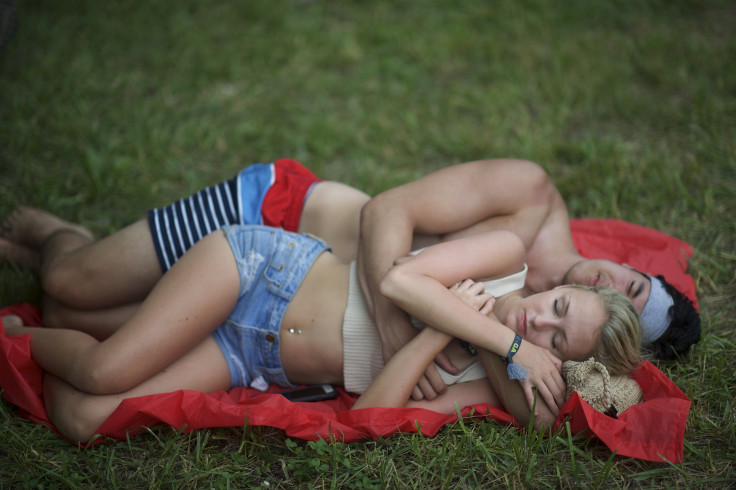
It could have been "Smugglr," an Airbnb-like app for, well, smuggling stuff. That was one idea Jeff Kulak and Charlie Williams tossed like cooked spaghetti at the wall one day when they were spitballing ideas for startups based on the truncated style of naming used by Flickr, Grindr and even Twitter in its early days.
The kicker was that Kulak didn’t even own a smartphone with which to use these apps. It was the spring of 2014, and they were sitting at the big green wooden dining table in Williams’ home in Bath, England -- a converted schoolhouse from 1836. Dismissing Smugglr due to the potential legal consequences, Kulak tossed out his next idea -- an app for people who wanted to meet up just to cuddle. “Cuddlr,” he blurted out.
“I want to make that,” Williams said immediately. “It’s actually a very easy thing to program.”
“I think we’re ready to reconsider who we are physically intimate with, and what that means.”
Cuddlr officially launched in the Apple App Store on Sept. 18, 2014, as a free app and gained users quickly thanks to massive press coverage. With the tagline “Great things start with a hug,” the app touted itself as “a location-based social-meeting app just for cuddling.” A statement on its website said, “It’s a way of finding people near you who are up for a cuddle, without any pressure or expectation.” It was not meant to be another dating app. Its founders were serious when they said it was supposed to be strictly platonic.
But not everyone was convinced of this premise. Days after the debut, Metro UK posted an article titled “Keep your hugs – the new Cuddlr app sounds seriously creepy,” in which Kate Bellamy wrote that it “sounds like hell.” Two days later, the Washington Post ran a similar story called, “I tried out Cuddlr, the ‘Tinder for cuddling,’ and all I got was severely creeped out.”
This controversy only stirred further interest, and within the first week Cuddlr had around 200,000 downloads, landing it on Apple’s “Top 10 Most Downloaded Apps” list.
But almost as quickly as it appeared, Cuddlr was gone.
The explosion of the app in the public sphere, and its swift downfall, are a testament to what happens when a provocative idea -- one tinged with sex -- gets sucked into the tech media hype cycle, which eagerly stoked the controversy surrounding the app, and drove adoption far beyond what Kulak and Williams could handle. It’s also the story of a particular human need proving itself resistant to a tech-driven solution, and why there will surely never be an “Uber for cuddling,” even in a world of Tinder, Grindr and Bumble. Indeed, more than any dating or hookup app, Cuddlr showed the fault line between dating and sex, which can surely be transactional, and the physical expression of intimacy, which turns out to be much more complicated.
Redefining Intimacy
Williams is a redhead, has blue eyes, a beard, a mustache and his face is covered in light freckles.
He studied classical piano in college, where he taught himself to code while studying for his master’s at the Center for Music and Science at the University of Cambridge, England. Born in Minnesota and raised in Chicago, Williams moved to England in January 2010 to be with his partner, Emma, and after graduation started working at Shazam, where he improved his coding skills.
As Kulak and Williams chatted about Cuddlr, they realized that no app existed for people who didn’t have enough physical but nonsexual touch in their lives and needed that. They reasoned that there was a whole market of people just waiting for Cuddlr to be created. “I think we’re ready to reconsider who we are physically intimate with, and what that means,” Williams told me by phone in October of last year.
While cuddling in most cultures is traditionally reserved for family (especially children), pets, close friends or people who are in a sexual relationship, Williams believed society had reached a level of maturity that allowed people to communicate what they really wanted from an interaction, and what their boundaries were. Cuddle parties, where a group of strangers could pay to meet up in a room with a supervisor and cuddle each other platonically, had popped up in recent years, and so had professional cuddlers -- people who got paid by other people to cuddle with them.

Williams wanted Cuddlr to be part of the growing conversation about how society views intimacy, connection and sexuality.
“I think we’re ready,” he said.
By the time Kulak had returned to Canada, he had already pushed the conversation to the back of his mind and continued with his work.
With a heart-shaped face, red hair, glasses and light blue eyes that darken on the outer edges, Kulak is a freelance graphic designer, illustrator and visual artist -- mostly doing contract work in the publishing world.
Meanwhile, in his spare time, Williams coded a quick framework and proof of concept for the app. It was done in a few days.
The Benefits Of Touch
Researchers have been looking at the potential health benefits of intimacy, affection and touch since the 1950s. Recently, they have focused more on cuddling to understand why people feel the need to do it and what the benefits actually are, which sheds some light on why phenomena like Cuddlr, cuddle parties and professional cuddlers exist.
People who are more affectionate “score lower in things like stress and depression and loneliness,” said Colin Hesse, assistant professor of speech communication at Oregon State University who is a researcher in the field of affection and its benefits. “They have lower blood pressure, lower total cholesterol, lower blood sugar. So it’s basically something that is stress-alleviating; it helps people deal with stress and recover from stress.”
In May 2014, shortly after Kulak returned to Canada, Williams informed him via email that he had finished the basic coding for the app and would like him to design a logo and interface.
Kulak put together a mint-colored screen with two columns for user’s profiles -- display pictures in a circle with their first name underneath.
Working on Cuddlr during the night and on weekends, moonlighting from his full-time work at the startup in Bristol where he had moved after Shazam, Williams started thinking about how to release the app.
“The whole thing came together pretty quickly,” he said.
In June he quit his job, started contracting as a developer for companies that needed an app built, and brought in a friend of a friend, Damon Brown, to help with the launch.
“Tinder is huge, Grindr is also huge. So if what you want is a hookup you’re very well served by existing apps. But that isn’t what everybody wants — and I think even a lot of people who are on Tinder, that’s not what they want all the time.”
Brown, a journalist and author of a few books about intimacy and technology, looks a bit like Will Smith, with a wide, welcoming smile and glasses that frame his warm, brown eyes.
For the next three months, Williams and Brown laid out the groundwork for the launch, discussing what worked and what didn’t, who the target market was going to be and trying to figure out how they wanted to approach the media.
“We had to think about it on a deeper level, because it had never been done before,” said Brown, meaning an app like Cuddlr.
When the app launched for iOS at the end of September last year, the team was expecting around 50 to 100 downloads in that first week.
The Hype Cycle Begins
Williams and Brown cowrote a story on Medium about the importance of the app in society, and Williams did an exclusive interview with Salon; published on the day of Cuddlr’s release, it sparked a large global media attention.
“No one imagined that it would take off so quickly, so we had concentrated on shipping the MVP [minimum viable product] to get feedback from early users, planning to fix bugs and roll out features gradually as the audience grew,” Brown said. Unfortunately, the surge of traffic early on led to many users seeing an “Error sending request” pop up whenever they tried to request a cuddle or send a message.
Like Tinder, Cuddlr was linked through a Facebook or Twitter profile to ensure that the user was an actual person. To add an extra level of safety, Cuddlr used an upvote/downvote system to help people decide whether to cuddle with someone. An upvote was given if someone cuddles with that person and thought the person was nice, a downvote -- or report -- was when a user who cuddled with the person felt uncomfortable for some reason.
“I think it’s important to not try to change a cuddle into something that is more than a cuddle,” said Williams.
Cuddlr encouraged people to meet up in public spaces and outlined in section nine of its terms and conditions that it could block anyone or delete content -- listing a number of reasons why it might do so, including terms like “harassing,” “intimidating” and “offensive.” To block someone, the app needed to receive complaints from other users outlining the unwelcome behavior.
“Tinder is huge; Grindr is also huge. So if what you want is a hookup, you’re very well served by existing apps,” Williams said. “But that isn’t what everybody wants -- and I think even a lot of people who are on Tinder, that’s not what they want all the time.”
Instead, Cuddlr was for people who want to make a connection with somebody, and then go about their day. If that person happens to make an amazing impression, then that’s great, and they could plan to meet up with them again.
Not Always So Platonic
There were warning signs right from the start. One user, "George," whom I reached through the app, said his very first Cuddlr experience got awkward. He said they talked on the phone a few times before deciding to meet up. He suggested a public place, but she wanted to come to his apartment in Manhattan, since she lived just a block away. He didn’t feel totally comfortable with her just coming over. “So I said, ‘OK, let’s meet on a corner and then walk to my place,’” he told me.
“It was a fun experience,” he said. “The cuddle itself was good, it was very friendly.”
He also mentioned that the woman wanted more than a cuddle, which he declined.
“After my experience with this person, I kind of got the sense that a lot of people were using Cuddlr as a hookup app rather than a cuddle app, which is fine if the woman initiates that, but it can send a weird message,” he said.
After the app launched, Williams stopped contracting and started working on it full time. The team also decided to make things more official, with Williams as the founder and developer, Brown as cofounder as well as doing media outreach, social media and customer support, and Kulak taking more of a silent partner role in the company.
The whole project was bootstrapped using their own money -- although Williams wouldn’t reveal exactly how much -- and eventually the revenue from in-app ads to pay for the server costs, which Williams said were up to about $300 a month last November.
That is when the partners started looking seriously for angel investors, so they could finally pay themselves and hire some more coders to help Williams with the growing number of errors that were showing up in his inbox daily, thanks to the 236,000 downloads -- 133,000 of which were in the U.S. -- and 10,000 daily active users. A daily active user was counted on Williams’ system as anyone who opened the app.
“One of the biggest challenges we had was to show to people that we’re not a dating app.”
“To have three people coding the app instead of one would be a big improvement in terms of what we can offer and how fast we can fix things,” Williams said in November. “I’ve got the people, I just need to get this seed round going so we can do it.”
Being far apart -- with Williams in England and Brown in California -- they would often set up a Skype update session early in the morning, Brown’s time, then continue to email each other throughout the day with what they had done and were planning on doing.
Williams usually worked from home, splitting his time among coding, interviews and fundraising. For Brown it was more about getting people to see Cuddlr as different from Tinder.
“One of the biggest challenges we had was to show to people that we’re not a dating app,” he said.
Cuddlr’s color scheme was one of the ways the team tried to differentiate the app and portray a more platonic tone, using the greens and blues to help give a calmer feel than the bright reds of Tinder.
Despite this, the team spent a lot of time after the app was released trying to get people to understand how it worked.
“People seem to think that the app is like this giant robotic arm that will grab them and another stranger and just sort of mash them together,” said Williams. “That you are somehow giving up autonomy or that using the app is like a form of consent, and that’s completely untrue.”
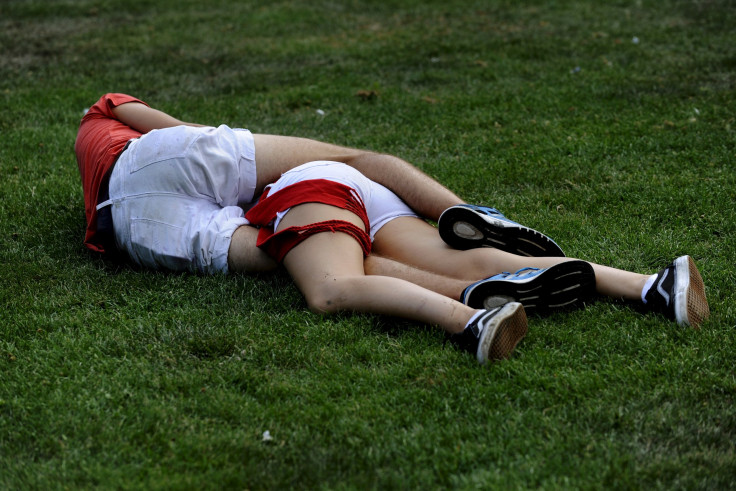
To change these ideas they expanded their outreach, explaining that when looking at people and sending a cuddle request through the app, users were starting a conversation rather than agreeing to do any particular thing.
“Tinder is clear and easy to understand. It’s consensual and it’s very action-oriented,” said Mark Morman, director of graduate studies at Baylor University’s department of communication studies.
He says that with Cuddlr there is more ambiguity. “You have this sort of, ‘So you’re just going to come over and cuddle? OK, so what does that mean?’” This uncertainty is because one person involved in arranging the cuddle could think it is going to lead to more intimate acts, or they want a cuddle that is more intimate than the other person wants.
Williams said that any time something calls for people to change their behavior, some will find it threatening, and that Cuddlr is in the stage that online dating was 10 years ago, with people saying, “Oh, God, it’s a new thing,” and not quite accepting the concept of platonic intimacy.
One of the reasons Cuddlr might not work, according to Morman, could be explained by a theory from researcher Kory Floyd that people are not affectionate with everybody because we view affection as a limited resource.
“We’re only really affectionate with a few people,” said Morman. “Even with the people we do share affection with, we don’t all share it necessarily at the same level.”
He did say, however, that the concept of Cuddlr and seeking touch from a stranger speaks to the social need we all have to feel accepted and feel affection. “We can’t meet those needs by ourselves,” he said. “But we have to have it.”
More Intimate Than Sex
The physiological and psychological benefits of cuddling are thought to be brought about by the release of certain hormones. Hesse, the affection researcher at Oregon State University, said two of these potential hormones are dopamine, which makes you feel happy, and cortisol, the levels of which go down when a person receives affection. While these are two options that researchers have been looking at, the main hormone that is thought to produce these benefits is oxytocin, a neurohormone also referred to as the bonding hormone, because it is produced after orgasm and breastfeeding.
“It’s like a job-well-done hormone that helps us feel warm and safe and close,” Hesse said.
David Hamilton, a biological and medicinal chemistry expert who worked in the pharmaceutical industry for four years developing drugs for cardiovascular disease and cancer, says that hugging is “literally like turning on the tap in the sink, but the tap is the oxytocin in your body that starts to flow through your arteries.” He said the oxytocin soaks up atoms known as free radicals, which trigger cardiovascular disease and inflammation.
“I often make a joke that you can produce oxytocin by hugging a tree, if hugging the tree makes you feel connected,” he told me.
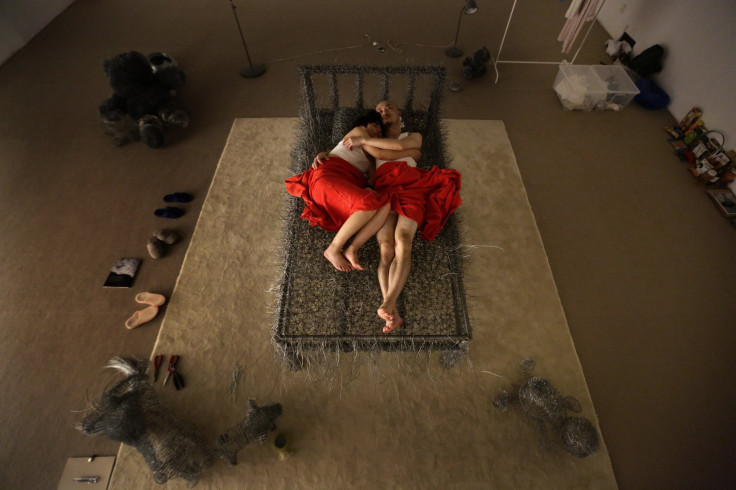
So would cuddling a stranger produce the same effect as cuddling someone you have an established emotional connection with?
“It wouldn’t produce as much oxytocin,” Hamilton said. “But it will still produce some, because the actual physical contact itself produces the oxytocin. You would just produce more of it if you enjoyed it.”
Hesse agrees, saying that it might not be quite as good as having a hug from a loved one, but that it could still be helpful.
Why do people then pay strangers to cuddle them?
“When you pay a professional, it’s more certain what you’re going to get, when you’re going to get it and everything is kind of set up before,” said Jacqueline Samuel, 32, a professional cuddler who works out of the Snuggery, a commercial space in Rochester, New York, which she said looks like an apartment when you walk in -- bed and all. Samuel said she has terminated relationships with clients in the past because they tried to take things beyond the professional realm, but that she hasn’t had a new client in two years.
One of the biggest challenges in interacting with people through apps is that many of the typical social cues we rely on to assess a person’s trustworthiness, credibility and motivation are taken away, said Katie Davis, coauthor of the book “The App Generation.”
In the book she lays out two terms. People that are “app-enabled” use technology as a way of expressing themselves and being creative. A person that is “app-dependent” looks to technology for all the answers to their questions, “feeling very tied to it, almost lost and anxious without it,” she said. These people want everything -- including intimacy -- with the push of a button, but it doesn’t work that way.
So why are people then OK with meeting up with a stranger via an app like Tinder and having an intimate interaction such as sex?
Morman says this is because society doesn’t necessarily see sex as an intimate thing in itself.
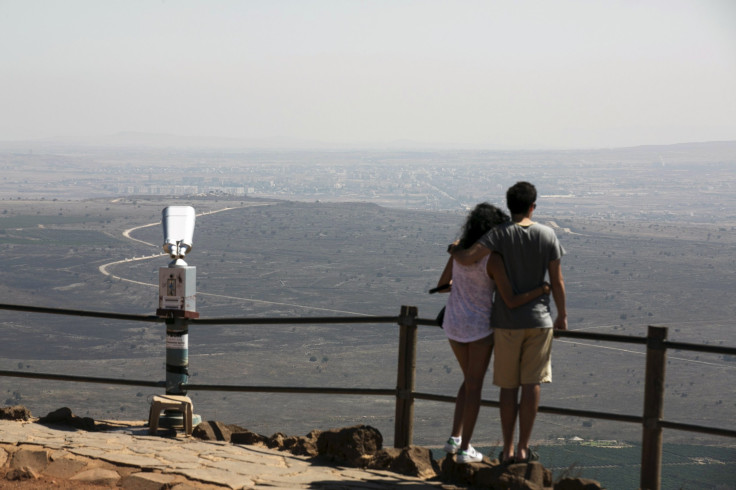
“Intimacy is a feeling of psychological or emotional closeness,” he said. “Those sex hookup apps, they take that out of the equation, so it isn’t about intimacy, it isn’t about love, it’s not about connection. It just strips it out, and I think it makes it easier for people.”
Hesse agrees, saying that with sexual intimacy we know more of what to expect and what is acceptable. “We don’t know very much what the end game is with cuddling for half an hour,” he said.
This might be one of the reasons why women in particular are not as comfortable meeting up through Cuddlr compared to Tinder, and because of concerns for their safety when planning to cuddle with a man.
Another reason, said Heather Schlegel, a social scientist who studies future trends -- particularly those relating to intimacy and relationships, like Cuddlr -- is that women tend to be more touchy-feely with their female friends, hugging more and kissing on the cheek, “whereas that’s just not socially acceptable for guys.”
Goodbye Cuddlr, Hello Spoonr
On the morning of Monday, March 16, 2015, Williams and Brown posted a link to a Medium post with the comment “#OneLastHug: Today, Cuddlr closes up shop. Thanks for all the love!”
In the Medium post, titled “One Last Hug: Cuddlr closes up shop and wishes you all the best,” Williams and Brown outlined the issues they had to deal with -- and they called it a postmortem. These problems mostly involved trying to get people to understand the concept of platonic intimacy, and the technical problems that Williams faced being the only iOS developer. “The weight and demand on the servers -- not to mention us -- was enormous. We were constantly playing catch-up,” Brown wrote.
A week after the release of the app, Williams’ inbox was flooded -- mostly with bug reports -- and his job was to fix these as soon as he could.
#Cuddlr @BuildSucceeded great idea, but I frequently receive "Network error". Is the issue known? https://t.co/0i0k6XqDSo
— Andreas Hahne (@hahne_andreas) January 20, 2015“At the beginning it was constant,” he said about the technical issues. “I don’t function well on a lack of sleep, but I was doing 14-16 hour days.”
This time was split between eight hours of coding the app and fixing the issues, and eight hours of being the CEO and trying to raise funds.
“Those two jobs plus sleep leave you no other time. I did that for a few weeks,” he said.
One of the main problems with chasing down angel investors once the app was released was that there was no revenue coming in from the start, so Brown and Williams were also working long hours with no income.
“It’s very difficult once you’ve launched to give investors a sense of time pressure, because they can always just wait, and every day they wait they learn more about whether you’re going to be successful or not,” he said. “There was a point where this was costing me money and generating zero revenue.”
Including ads was the only way to keep the app afloat; otherwise Williams would have had to shut it down in November last year. If he were to do it all over again, he says he would raise funds before the launch. So what did the app end up costing him each month?
“I haven’t added it up, not a huge amount,” he said. “At no point were we burning $1,000 a month, that’s safe to say. In terms of the way it ran, there was very little cost.”
In December he took a break and stayed in a cabin in Saskatchewan in Canada for a week. Getting back into working long days on Cuddlr was hard, and he started to question whether he really wanted to continue at that level of commitment, especially since the numbers weren’t moving up and there was no great investor support for the app.
In January, Williams and Brown started talking about shutting it down. While they say there were still a lot of people benefiting from it, the numbers were not high enough to warrant both of them working on it full time anymore.
Once the app closed the team received a new flood of emails -- this time from users of the app lamenting its end.
“An email came through of somebody saying, ‘Here’s why I found Cuddlr so helpful, I’m sorry that it’s not going, but thank you for making it,’” Williams said. “It’s too bad because those are the things people say at your funeral. Nobody sends you that email when your app’s in the store, it’s just, ‘I don’t get this,’ and ‘Fix this,’ and ‘Why isn’t this working?’”
He also said the people for whom the app served a deep purpose were often drowned out -- even in the team’s minds -- by the people who were sure it was another dating app.
For Brown, shutting down the app was more about knowing when to let go and move on to the next thing.
“We’ve had a once-in-a-lifetime ride, and part of respecting that ride is respecting when it is over,” he said. “So we weren’t going to let it get to the point where our users aren’t being served or that we burnt ourselves out to the point where we didn’t even want to talk about it anymore.”
One of the things they tried to encourage in the postmortem was the idea that the conversation about platonic intimacy had already started, and that people could continue to talk about it -- perhaps eventually changing the cultural norm.
After the app shut down they all took a little break.
“We’re exhausted, all of us,” said Brown back in March. “This is the tiredest I’ve been in a very long time.”
Now that the dust from Cuddlr has settled, the team members are slowly moving on. Kulak is continuing with his design work, Williams just finished a contract for an agency where he was working for a global car brand and is in talks with a few other companies about what he’s going to do next, and Brown recently became a media studies professor at John F. Kennedy University in California, advising other startups interested in using technology to connect people, as well as working on his next app and his next book.
This is where the story of Cuddlr ends, except it isn’t: Williams, Brown and Kulak sold the app to New York-based entrepreneur Eugene Belenky, who relaunched it in September with the same premise but a different name: “Spoonr.” Reached by International Business Times, Belenky said he renamed the app because he “had to,” but would not say why , or how much he paid for it.
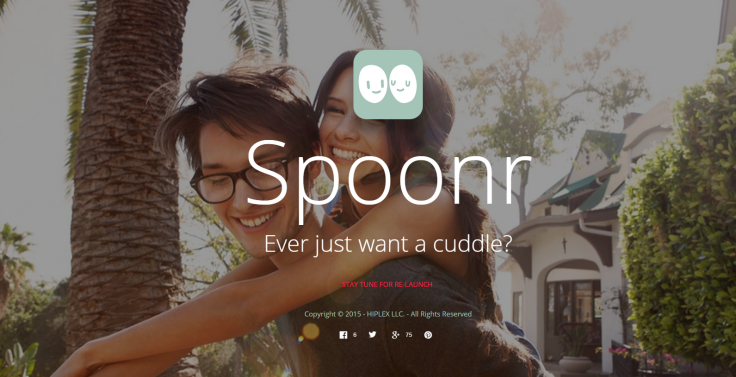
Belenky also owns another app in the same general genre as Cuddlr. Tryster Dating is a free app that lets you “meet, chat and flirt with people that are literally a few feet away from you.”
So why pick up an app that didn’t work the first time around, and whose entire premise was so controversial that many people just didn’t understand what it was or why you would use it?
“I like the idea; it’s kind of different to what exists,” Belenky he said. “The user base -- the fans -- liked it too, which is a positive thing to prove that the concept is working. I saw a lot of potential in it and I liked the rate of growth that they were able to achieve with so little.”
This new team is working on a redesign of the app, both the back end and the user interface, in hopes of fixing all of the “major flaws” that came with the app when Belenky purchased it.
Spoonr currently has around 300,000 users, and sees thousands of cuddle requests daily, said Belenky.
"I really want to get to 500,000 users within six months," he said.
So, goodbye, Cuddlr, and hello, Spoonr. The platonic ideal of cuddling as a service lives on, whether we’re ready for it or not.
© Copyright IBTimes 2024. All rights reserved.





















